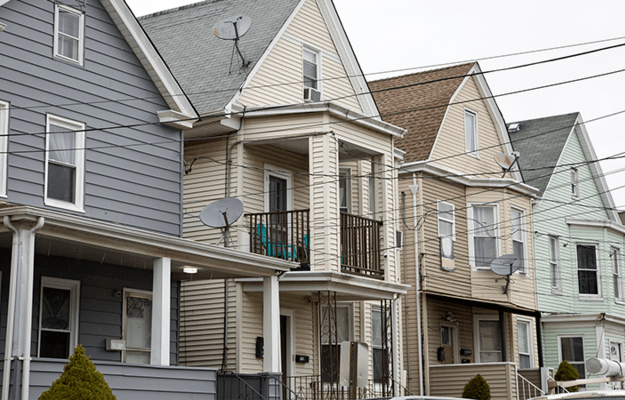
(Monkey Business Images/Shutterstock)
How Cities and States Can Increase Black Homeownership
Closing the racial homeownership gap is critical for creating a more equitable American society. Homeownership is considered a key mechanism for building wealth and reducing many of the inequalities around housing and economic stability.
However, addressing the racial homeownership gap is challenging; homeownership disparities have been created through decades of discriminatory lending, racist housing policy, and other segregating and extractive forces that have led to both a large racial homeownership gap and a system in which Black-owned homes and neighborhoods with a majority of Black residents are rated less valuable than similar homes or neighborhoods with white households. This has intergenerational effects that entrench the homeownership gap; children of Black households are less able to receive wealth transfers and financial support from parents, which limits equitable access to opportunities, such as education and homebuying.
In recent years, some cities and states, such as DC (PDF) and Memphis, have begun focusing on closing the racial homeownership gap. A new report released by the Urban Institute shows Black homeownership increased more than white homeownership during the COVID-19 pandemic, hopefully indicating a positive trend in homeownership rates.
In addition to some of the favorable economic scenarios during the pandemic—such as low interest rates—Housing Matters has aggregated below some promising practices that may help cities and states reduce the Black-white homeownership gap and continue this trend. Without action, the gap likely won’t close on its own.
Here are five steps cities and states can consider:
- Increase building permits. Currently, supply isn’t meeting demand. Black households have a higher homeownership rate in metropolitan areas with more building permits per household (PDF). Building permits indicate areas where there’s more new construction, suggesting that increasing housing supply may be critical for more equitable homeownership options. Localities have many levers to encourage more supply, including streamlining the permitting process and changing zoning laws, reducing restrictive regulations for development, and encouraging local financing supports for developments, which could range from consolidating applications to leveraging tax incentives.
- Expand affordable housing supply. There is a persistent racial income and wealth gap, which puts Black potential homebuyers at a disadvantage when housing supply becomes less affordable. Home price and interest rate increases over the past year halved the number of Black households who could afford a home. Increasing affordable supply could expand this number. This includes increasing opportunities for condominium development, which can be an affordable option for homeownership, and incentives for using land in creative ways through supply interventions like accessory dwelling units. Though studies haven’t yet shown that expanding affordable housing leads to higher Black homeownership rates, this could be an important step.
- Encourage changes to credit scoring. Though increasing supply is critical, building supply takes time. During planning and construction, local policy makers can build better-targeted demand-side policies to help Black households be more competitive in the market. Currently, there is a gap in credit scores, which affects access to mortgages. More than 50 percent of white households (PDF) have a FICO credit score above 700, compared with only 21 percent of Black households, and more than a third of Black households have insufficient credit or lack a credit score, compared with only 17.9 percent of white households. The ability to obtain a mortgage would increase substantially if credit score calculations were more equitable. One way to increase credit score equity would be underwriting changes, such as including positive rental payments in credit score calculations. Cities and states can encourage rent reporting; California’s Senate Bill 1157 required landlords with 15 or more subsidized units to offer their tenants the option for rent reporting.
- Make down payment assistance (DPA) more available. Studies show down payment assistance has an important role in closing the racial wealth gap, particularly in high-cost areas, where racial wealth gaps put many Black potential homebuyers at a disadvantage. During the pandemic, many households used the stimulus funds as a down payment, making their transition into homeownership more feasible, suggesting that increases in both availability and information about DPA may be helpful for increasing Black homeownership. Though DPA programs vary substantially by state and locality, local policymakers could aggregate existing programs, provide more communication about their requirements and uses, and expand or target DPA in new ways. Place-based special purpose credit programs and DPA targeted to first-generation buyers may be ways for cities and states to refine how housing assistance is delivered to increase Black homeownership.
- Better target local resources. States and localities can analyze their current targeting practices for homeownership support, such as homebuyer education, to determine whether they’re best supporting the households who need it most. Evidence shows addressing information gaps through housing counseling, especially to support first-time and first-generation potential homebuyers, can be an especially effective use of resources.


